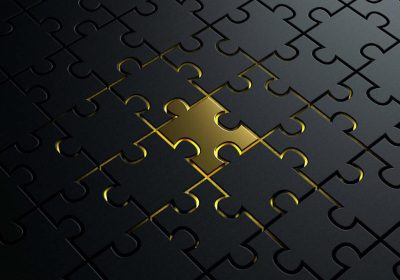Quantum computing’s ability to solve problems that would take classical computers millennia has captured global interest.
But the path to functional, scalable quantum machines has been riddled with fundamental challenges.
At the heart of the problem lies the qubit, the quantum version of a digital bit.
Qubits can exist in multiple states simultaneously, but this delicate state, known as quantum coherence, is extremely sensitive to environmental interference.
Even atomic-scale flaws in the materials that host qubits can disrupt performance.
A physicist at the University of California, Riverside, may have cracked this persistent problem by adding a layer of gold just a few atoms thick.
Quantum computers rely on superconducting materials to manipulate and preserve qubits, which hold quantum information.
But imperfections at the surface of these superconductors have long created instability, introducing noise and causing fragile quantum states to collapse.
That flaw has prevented reliable scaling of quantum systems.
Peng Wei, associate professor of physics at UC Riverside, has developed a technique to coat niobium, one of the most widely used superconducting metals, with a uniform, ultra-thin gold layer.
Wei’s team found that this layer, roughly ten atoms thick, smooths out surface defects without compromising the superconducting properties of the underlying material.
“By using gold in these key interfaces, we’re able to maintain a cleaner signal path and reduce loss in the superconducting circuit,” Wei said.
Surface defects disrupt Cooper pairs
Qubits in superconducting systems are carried by what physicists call Cooper pairs—pairs of electrons that move together without resistance.
Surface defects in materials like niobium disrupt these pairs, acting as tiny traps that cause qubits to lose their coherence.
“The problem with superconducting surfaces is that they’re never perfect,” Wei said. “These defects become little traps to break Cooper pairs, which can compromise the qubit performance.”
Wei and his team focused on the outermost atomic layers of the material, an area often overlooked in traditional semiconductor research.
They used an “epitaxial” process to grow a crystalline layer of gold on the niobium surface. Because gold is chemically inert and doesn’t oxidize, it provides a stable, uniform shield against environmental noise.
“Too thick, and we kill the superconductivity. Too thin, and the defects still dominate. We found a sweet spot,” Wei said.
Industry interest and future plans
Wei emphasized that the gold-coating technique is compatible with existing chip fabrication methods, which could make it attractive to companies pursuing commercial quantum processors.
“Quantum processors need better superconductor materials and consistency,” he said. “This technique offers a path to make them more stable, more repeatable, and ultimately, more scalable.”
The innovation has already gained attention from major research institutions. Teams at MIT, the National Institute of Standards and Technology (NIST), and SEEQC Inc. have collaborated with Wei on related work involving superconducting resonators and diodes.
Wei’s group is now testing the coating with other superconducting materials and exploring its potential in quantum sensors.
UC Riverside’s Office of Technology Partnerships has filed a U.S. patent and is helping Wei prepare for possible commercialization through a startup.
“This is just the beginning,” Wei said.
The study is published in the journal Nature Electronics.









No Comment! Be the first one.